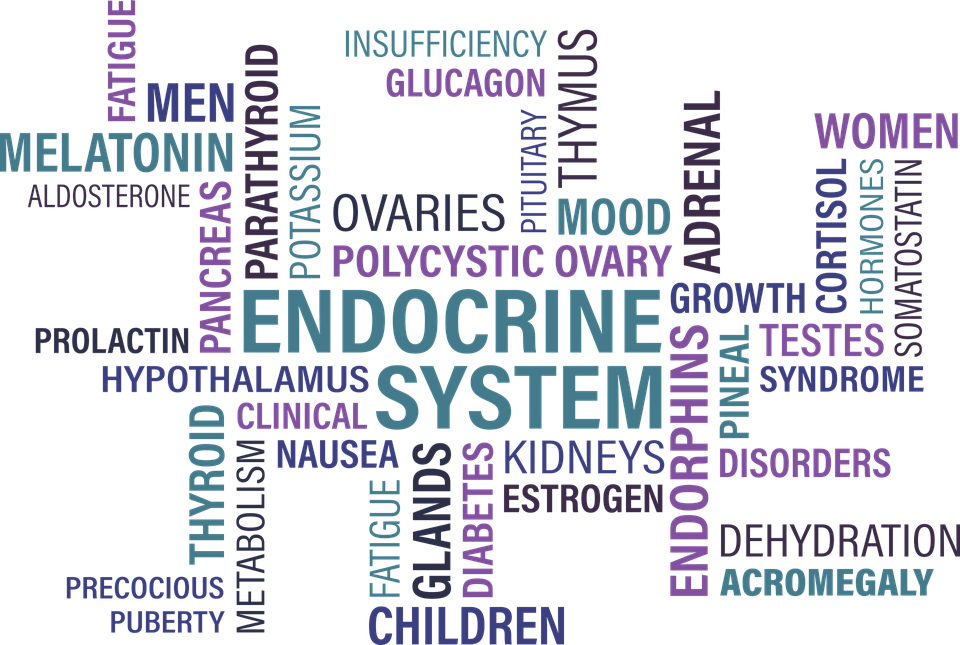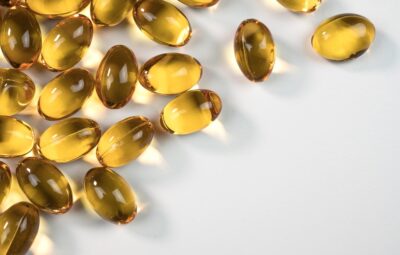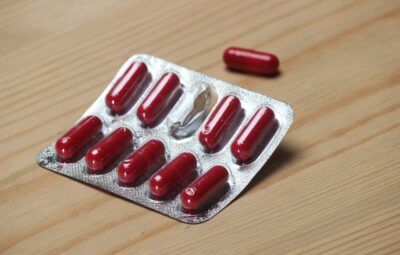The hormones released by the endocrine system have a significant influence on multiple systems in the human body. The system produces numerous hormones which assist in controlling certain characteristics. Various hormones contribute to reproductive well-being in the male body.
The endocrine system exists in multiple glands. Every one of these glands produces individual hormones. The glands release hormones into the bloodstream. Each hormone then provides a specific function.
Reproduction is only one function regulated by hormones. Other functions include metabolism and electrolyte balance.
A kid’s physical form likewise relies upon hormones, particularly during adolescence. Hormones play a role in expanding and maturing during this period.
One of many hormones that is essential for male and female fertility is luteinizing hormone. The hormone plays a part in reproductive health. The production of other hormones is also impacted by it.
We examine the characteristics and functions of the luteinizing hormone within the human body. We look into the amount of luteinizing hormone the body necessitates, mainly with males in mind.
What Is Luteinizing Hormone?
Luteinizing hormone is classified as a gonadotrophic hormone. This hormone can be found in the bodies of both men and women. It is vital in the formation of the hormone responsible for creating gender traits.
In females, the secretion of LH is essential for the creation of the hormones discharged by the ovaries. The testes produce testosterone in men.
It is essential for men to produce luteinizing hormone. The synthesis of these steroid hormones necessitates the luteinizing hormone to be present.
In males and females, the anterior pituitary gland generates luteinizing hormones. Once the hormone is generated, the anterior pituitary gland will secrete the hormones into the blood stream.
The hormone goes to the areas of the body where it is needed; for males this is their testicles.
How Does LH Stimulate Testosterone Production?
Prior to the formation of luteinizing hormone, it is paramount to take into account the part played by other hormones in the manufacture and secretion of this particular hormone.
The gonadotropin-releasing hormone comes into mind first3. The formation of gonadotropin-releasing hormone causes the endocrine system to emit both follicle-stimulating hormone and luteinizing hormone.
Once the secretion of luteinizing hormone has occurred, it is sent to the testicles inside of the male anatomy. The testicles will be activated to create testosterone, which is generally produced in the male body from this area.
Researching Leydig cells is another area of focus. These cells are present in the testes. They take part in the relationship between testosterone and luteinizing hormone.
This kind of connective tissue can be observed surrounding the seminiferous tubules, and inside it exists certain cells. The chief aim of Leydig cells in the testes is to make hormone – consequently, the luteinizing hormone in the testes stimulates the action of these cells.
The link between the two is also why males predicted to have either primary or secondary hypogonadism are usually expected to have their levels of luteinizing hormone tested, in addition to their testosterone levels.
What Is The Function Of Luteinizing Hormone?
The role of the luteinizing hormone is straightforward but varies between males and females. The main goal, as we have outlined, is to act as an activator to cells responsible for creating certain sexual or steroid hormones existing in the human body.
The luteinizing hormone causes the corpus luteum to become active in females. This results in the generation of progesterone, which takes place when a female is expecting a baby.
In male patients, luteinizing hormone guarantees that the Leydig cells in the testes are activated. This causes these cells to start producing testosterone. The quantity of luteinizing hormone dispensed to the testicles is contingent on the degree of testosterone in the body.
When testosterone levels decrease, the anterior pituitary gland will be aware of the reduction. It responds with a larger amount of luteinizing hormone.
After the Leydig cells manufacture testosterone, the hormones are discharged into the circulatory system. The hormones travel through the physique and fulfill a few objectives. An assistant position is included in the creation of sperm, which is imperative for male reproductive wellbeing.
When Is LH the Lowest?
The typical hormone level of LH is usually the least during the luteal phase of a normal menstrual cycle, which is when ovulation has already passed. Assuming you are not expecting a baby, of course. It is standard for luteinizing hormone (LH) to range from 0.7 to 12.9 IU/L throughout the luteal phase, and this value is typically higher at 1.9 to 14.6 IU/L during the follicular phase. However, different women may experience diverse levels.
If you are expecting a baby, the level of luteinizing hormone (LH) are usually the lowest possible (no more than 1.5 IU/L).
When Is LH the Highest
LH (Luteinizing Hormone) concentrations are highest around the midpoint of the menstrual cycle. The concentration of LH for different individual may differ, but the standard levels of LH are normally about 12.2-118.0 IU/L near the point of ovulation.
LH Surge
LH levels rise dramatically around 24-36 hours before ovulation. The “LH surge” is a phrase used to describe high levels of luteinizing hormone (LH). It isn’t uncommon for LH to be as high as 118.0 IU/L. The length of every person’s cycle is distinctive; nevertheless, it is common for the luteinizing hormone (LH) rise and ovulation to usually transpire around the middle of the regular menstrual cycle.
Testing for LH
A test for LH is designed to determine the quantity of luteinizing hormone present in the body. Certain LH tests can be carried out by a physician, while other tests can be done conveniently in your own home. An in-depth examination of the methods for assessing LH is presented here.
Blood serum test
The most precise method for assessing your LH levels is a blood serum test conducted in your physician’s office. If you decide to get this test done, you need to make a meeting with your doctor to obtain a blood sample, which will then be shipped to a lab and examined. Once all the tests are finished, you will get your outcomes within a few days.
You will have to have multiple tests and consultations with your medical provider in order to observe the changes in your LH levels across a period of time. Blood serum testing may not be ideal for everyone due to the cost and time commitment involved. But it can be a necessary step for women who have difficulty conceiving, or for those exhibiting symptoms associated with hormonal conditions such as PCOS and endometriosis.
At home urine test
Apart from analyzing blood in a physician’s clinic, it is also possible to measure your luteinizing hormone levels utilizing a urine test in the comfort of your own home. The standard practice for determining ovulation is typically by using an Ovulation Predictor Kit, often referred to as an OPK.
OPKs are identical to pregnancy kits, but they detect luteinizing hormone (LH) instead of hCG (human chorionic gonadotropin). The objective of these tests is to determine whether the levels of LH present in the body are at a high enough level to indicate the start of a surge.
Be aware that ovulation predictor kits (OPKs) are not precise indicators of your luteinizing hormone (LH) levels. They will only reply in the affirmative or negative as to whether your luteinizing hormone is adequate to be categorized as rapidly increasing.
If you want to find out the specific levels of LH hormones in your body without having to visit a doctor, services such as the Mira App and Analyzer can provide you with an efficient solution. This method of at-home testing requires the user to take a urine sample, insert the Mira test wand into it, and put the wand inside the Mira Analyzer. The Mira Analyzer will show you precisely what your LH concentration level is. Over time, one can become more familiar with their own menstrual cycle, making it easier to forecast when the luteinizing hormone increase will occur and the optimum time for conception.
Why Should You Monitor LH?
Because LH is so critical to the regulation of the menstrual cycle, there are a few different reasons why it may be necessary to have your LH levels tested regularly:
Fertility issues
If you and your companion are having difficulty conceiving, it may be beneficial to have an LH level analysis done. At a certain moment during the menstrual cycle, the higher levels of luteinizing hormone cause ovulation to occur, and that is necessary for conception. By running a luteinizing hormone test, you can get a clearer picture of whether or not ovulation could possibly occur.
Determining ovulation
Testing for luteinizing hormone (LH) can be done to determine the approximate day of ovulation. It is vital to keep this in mind when preparing for a pregnancy, as the most likely time for conception is during the five days before you ovulate and the 24 hours after. In the productive period of time, the day your LH surge occurs and the day of ovulation are thought of as your topmost reproductive days.
In order to increase your odds of conceiving a child, medical professionals generally suggest having sexual intercourse with your significant other as much as you can throughout this period. By measuring the luteinizing hormone levels, you can be more accurate in determining when intercourse with your partner is most likely to lead to a successful pregnancy.
Menstrual changes
If you observe shifts in your period, it would be wise to have your luteinizing hormone levels gauged. There could be a hormonal imbalance if there is a disturbance in the level of LH, which may suggest that the person suffers from polycystic ovary syndrome.
If you think that your unusual menstrual cycles could be a result of your age, an LH test alongside other exams might aid your medical professional in verifying whether or not you are in the middle of menopause. The high baseline levels of luteinizing hormone present in women going through menopause is the reason for this.
Effects Of Luteinizing Hormone On Male Fertility
Several elements can play a role in causing male infertility. It is challenges that make it hard to identify the source of difficulty with fertility. It makes it more difficult to supply the proper care for a male patient.
The hormone luteinizing has some involvement in determining male fertility.
Problems can develop with the production of luteinizing hormone. This can have adverse effects on male reproductive health. In certain situations, it could even lead to male infertility.
A significant function of luteinizing hormone is essential in the convenience of human health. This is alongside follicle-stimulating hormone or FSH. The luteinizing hormone plays a key role in maintaining adequate levels of testosterone.
A problem with luteinizing hormone production can be disastrous. It can cause testosterone levels to decline. The impact of testosterone is not as noteworthy in a male body.
A decrease in luteinizing hormone levels can be a cause for concern for both genders. There is a comparable level of gravity when examining fertility among both genders. Frequently, it results in difficulties related to a female’s menstrual period.
When Should You Measure LH?
It is advisable to take your LH levels during the initial phase of your cycle (roughly one week before ovulation starts). It is advisable to measure your LH amounts every day throughout the period in order to determine how they contrast to your LH peak. It is advisable to assess yourself at the same time daily to obtain the most precise outcomes.
Understanding Luteinizing Hormone Levels in Females
The specific LH levels of a person may differ according to the individual, however there are standards that determine if the levels are typical, increased, or decreased.
Normal LH levels
In women, LH levels typically remain between 5-25 IU/L. However, there are more specific ranges to be aware of including:
- Follicular phase: 1.9 to 14.6 IU/L
- Luteal phase: 0.7 to 12.9 IU/L
- Midcycle/Ovulation: 12.2-118.0 IU/L
- Pregnancy: <1.5 IU/L
- Menopause: 5.3 to 65.4
High LH Levels
If your LH levels are above the normal threshold, this could indicate any of the following:
- Ovulation disturbances
- Polycystic ovary syndrome (PCOS)
- Turner syndrome
- Menopause
To find out the precise cause of your high LH levels, your doctor may need to do additional tests. They can then give more guidance as to what action you should take depending on your circumstances.
Low LH Levels
If LH levels are below the normal threshold, this could indicate:
- Hypopituitarism
- Malnourishment
- Eating disorders
Once more, your doctor will use additional tests to figure out the precise source of your low LH amounts so that they can provide you with the most suitable advice for your condition.
Best Supplements For Increasing Luteinizing Hormone In Men
Certain research has indicated that taking specific herbal supplements can be helpful in regulating hormones in the male body.
When considering ways to improve luteinizing hormones in men, the main aim is usually to raise testosterone levels. Research has shown that a number of herbal extracts and substances can boost testosterone levels.
Some supplements that men should consider if they need to increase luteinizing hormone and testosterone include:
- D-Aspartic Acid
- Vitamin D supplements
- DHEA
- Ashwagandha Root Extract
- Tribulus Terrestris
- Fenugreek Seed Extract
- Zinc supplements
Some supplements may increase testosterone levels, while others can be taken in conjunction with an exercise program to help increase one’s strength.
The possible outcome of taking the supplement and engaging in physical activity could result in an increase of testosterone and luteinizing hormone production in the body.
Conclusion
The luteinizing hormone is vital in the reproductive system and in the creation and liberation of additional hormones.
A drop in luteinizing hormone levels in males can cause a variety of possible issues, including hypogonadism. Suggestions have been made to raise the quantity of luteinizing hormones generated by the body.
Men should only take herbal supplements that have been proven to be effective through scientific research.







